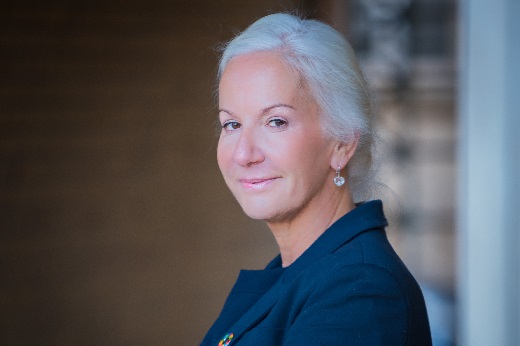|
|
RJC Ready to Target Consumers
New CEO and chairman outline their strategy
Jun 27, 2019 5:07 AM
By Avi Krawitz
|
|
|

RAPAPORT... The Responsible Jewellery Council (RJC) is planning a strategy to help retailers assure consumers their jewelry has been ethically sourced and that they follow the required sustainability standards.
The group, whose mandate is to set standards for the jewelry trade, will mark its 15th anniversary in 2020 and is mulling its next stage of development, newly appointed executive director Iris Van der Veken and chairman David Bouffard explained in an interview with Rapaport News during the JCK Las Vegas show in early June.
“We need to look at the next 15 years,” Bouffard stressed. “We have a new generation of young consumers who are looking for assurances that the RJC provides. Many of our members are retailers, and we need to develop a tool kit to help those companies leverage their membership with consumers.”
While providing such support for retailers has not yet been outlined, Bouffard envisages online tools and social-media assets that jewelers can use to emphasize their RJC participation.
To date, the RJC’s focus has been on increasing its membership within the business-to-business (B2B) space, but consumers are largely unaware of what the RJC does or what it stands for. Developing ways in which retailers can use the RJC to enhance their brands is something the nonprofit will focus on moving forward, he added.
Geographical growth
The RJC has grown from 14 founder companies in 2005 to nearly 1,200 members today. Those span the mining, manufacturing, wholesale and retail sectors, across the gold, platinum, diamond, colored-gemstone and silver segments of the jewelry market.
Along with getting the word out to consumers, the group’s leadership sees scope for further membership growth, pointing to opportunities in Asia and South America, but also in its more established markets of Europe and North America.
That work involves more than just recruiting new members, stressed Van der Veken, who joined the RJC in April. It extends to strengthening existing members’ awareness of its code of practice and how they can improve their implementation of the group’s standards.
Sustainable goals
The RJC recently updated its code of practice to include colored gemstones and silver, and align its due-diligence requirements with those of the Organisation for Economic Co-operation and Development (OECD). The revisions also established new standards for detecting undisclosed synthetic diamonds, as well as providing updates to its guidance on labor practices, human-rights issues, environmental standards and better inclusion of gender and vulnerable groups.
Van der Veken believes the code of practice provides a strong framework to help companies move their sustainability programs forward and better aligns the industry with the 17 UN Sustainable Development Goals (SDG). “When we look at how to tackle the next 15 years, our strategy is about sustainable growth under the guidance of the SDG,” she added. “There is a great opportunity in these goals, and we have to look at how we are contributing to them as an industry.”
Creating communities
Aligning the industry with a set of ethical sourcing and responsible business practices has been the RJC’s goal since its start. As the organization enters its next phase, some of the more established members are pushing for wider participation by working exclusively with other RJC members.
Founding member Rio Tinto, for example, requires its partners to be RJC-certified. Similarly, Signet Jewelers encourages membership among its stakeholders, and approximately 95% of the jeweler’s purchasing is from RJC-certified companies, noted Bouffard, who is vice president of corporate affairs at Signet. Such a model creates “an interesting community of supply,” he explained.
Working together and creating such synergies is vital if the RJC is to achieve its goal of building confidence among consumers buying jewelry, Van der Veken added.
“It’s about building trust among consumers, who are more conscious than ever about the choices they make and sustainability issues,” she said. “It’s important they have the trust and confidence that the product they buy online or in a store has that seal of approval and has met the right sourcing requirements. They need to know that the RJC has the ability to deliver that.”
Image: Iris Van der Veken, the RJC's new executive director (Responsible Jewellery Council).
|
|
|
|
|
|
|
|
|
|
Tags:
Avi Krawitz, david bouffard, diamonds, Iris Van der Veken, Jewelry, Responsible Jewellery Council, RJC, Signet Jewelers
|
|
|
|
|
|
|
|
|
|
|

|
|